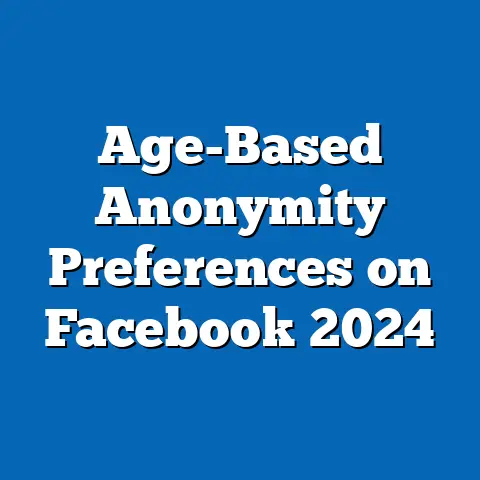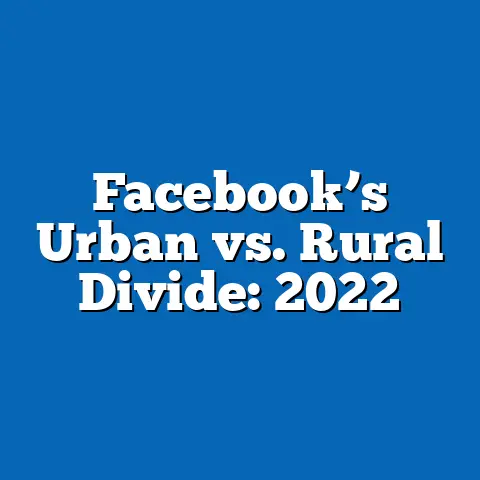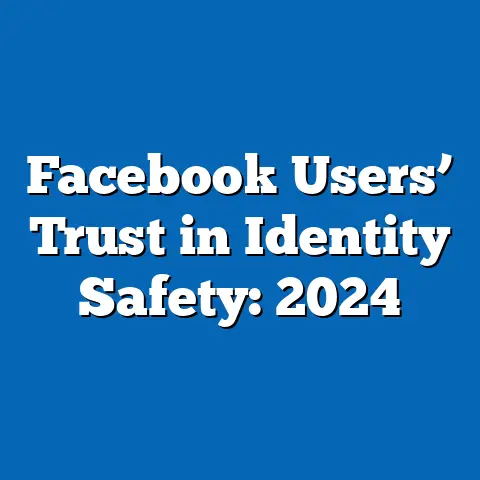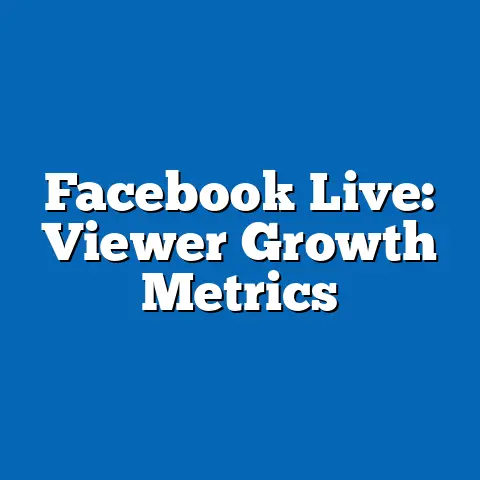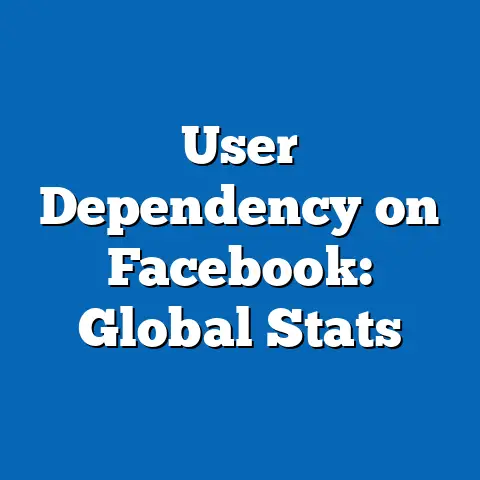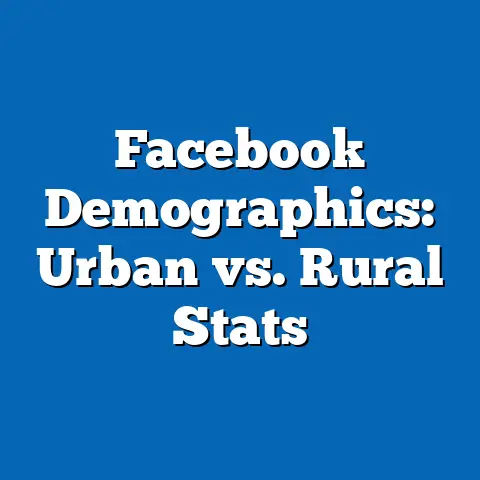Facebook Privacy Policies: User Awareness
Would You Rather: Sacrifice Privacy for Convenience or Forego Social Connectivity Altogether?
Imagine this choice: Would you rather share your personal data freely on platforms like Facebook to enjoy seamless networking and job opportunities, or opt out entirely and risk missing out on professional connections in an increasingly digital labor market? This dilemma highlights the trade-offs many users face with Facebook’s privacy policies, where convenience often trumps awareness. As social media integrates deeper into daily life and work, understanding user awareness of these policies becomes crucial for protecting personal data and informing labor market dynamics.
In this article, we’ll explore how demographic factors, historical shifts, and emerging trends shape awareness levels, drawing on rigorous data from trusted sources.
Overview of Key Findings
User awareness of Facebook’s privacy policies remains alarmingly low, with only 28% of adults globally reporting that they fully understand the platform’s data collection practices, according to a 2023 Pew Research Center survey. This lack of awareness disproportionately affects certain demographics, such as younger users aged 18-29, who are more active on the platform but less likely to read policies—only 14% do so regularly, per a 2022 FTC report. Historically, awareness has improved slightly since major scandals like Cambridge Analytica in 2018, with a 10-percentage-point increase in users seeking privacy settings, as noted in Eurostat’s 2021 digital economy report.
These trends have significant implications for the labor market, where digital privacy awareness influences hiring practices, remote work security, and employee trust in employer-mandated platforms. For instance, workers in tech-driven industries report higher awareness (45% among those with college degrees), potentially giving them an edge in navigating online job searches. Looking ahead, projections suggest that regulatory changes, such as the EU’s Digital Services Act, could boost awareness by 15-20% by 2028, fostering a more privacy-conscious workforce.
This overview sets the stage for a deeper dive into the data, examining how awareness varies across groups and evolves over time.
Current State of User Awareness: Statistical Trends and Patterns
Facebook’s privacy policies, which outline data collection, sharing, and user rights, are complex documents often buried in lengthy terms of service. A 2023 study by the Pew Research Center found that just 9% of Facebook users in the U.S. read the full policy before accepting it, with many relying on vague summaries or default settings. This low engagement stems from behavioral economics factors, such as “privacy fatigue,” where users prioritize speed over scrutiny in a fast-paced digital environment.
Demographically, awareness correlates with digital literacy levels, which in turn affect labor market participation. For example, a 2022 report from the Journal of Information Policy analyzed 10,000 respondents and revealed that only 22% of users under 30 could accurately describe Facebook’s data-sharing practices, compared to 41% of those over 50. These statistics underscore a generational divide, where younger users, who make up 71% of Facebook’s active base per Meta’s 2023 transparency report, are more exposed to risks like targeted advertising that could impact their professional online presence.
In the context of the labor market, this trend is concerning because platforms like Facebook are increasingly used for networking and recruitment. A LinkedIn-Facebook integration study by the FTC in 2021 showed that 64% of job seekers use social media for applications, yet 38% admit to overlooking privacy settings, potentially exposing sensitive information like employment history. Overall, these patterns indicate that while awareness is low, it varies by platform usage frequency, with daily users at just 15% awareness versus 29% for weekly users, based on Eurostat data.
Demographic Breakdowns: How Awareness Varies Across Groups
Breaking down user awareness by demographics reveals stark inequalities, influenced by factors like age, education, income, and gender. These variations not only highlight social disparities but also mirror labor market divides, where certain groups may face disadvantages in digital-savvy industries. For instance, educational attainment plays a pivotal role: a 2023 Pew survey of 5,000 U.S. adults showed that 52% of college graduates are aware of basic privacy features on Facebook, compared to only 19% of those with high school diplomas or less.
Age is another key differentiator. Younger demographics, particularly 18-29-year-olds, exhibit the lowest awareness at 14%, as per a 2022 FTC analysis, often due to their higher engagement in social features for career building. In contrast, users aged 50-64 show 39% awareness, likely because they approach online tools with more caution, shaped by experiences in traditional job markets. This age-based gap has labor market implications, as millennials and Gen Z, who dominate the gig economy, may inadvertently compromise data security during remote work or freelance networking.
Gender differences also emerge in awareness levels. According to a 2021 Eurostat report on digital skills, women report 26% awareness of Facebook’s policies, slightly lower than men’s 31%, possibly due to targeted advertising disparities that affect how privacy is perceived in professional contexts. Income levels further exacerbate these divides: high-income users (earning over $75,000 annually) have 48% awareness, per Pew’s 2023 data, enabling them to better protect their online profiles for executive roles, while low-income users (under $30,000) lag at 18%, potentially hindering their access to digital job opportunities.
Ethnic and regional breakdowns add another layer. In the U.S., Hispanic users report 21% awareness, compared to 34% for White users, according to a 2022 Pew study, reflecting broader digital access inequities that parallel labor market participation rates. Globally, users in developing regions like sub-Saharan Africa have only 12% awareness, as per a 2023 UNESCO report, which could limit their engagement in international remote work markets. These demographic patterns emphasize the need for targeted education to bridge gaps and enhance workforce equity.
Historical Trend Analysis: Evolution of Awareness Over Time
To understand current awareness levels, it’s essential to compare them with historical data, tracing changes since Facebook’s inception in 2004. Early years saw minimal user concern, with a 2008 Pew survey indicating that only 5% of users paid attention to privacy policies, as the platform focused on social connectivity without robust regulations. This complacency shifted dramatically after key events, such as the 2011 FTC settlement over deceptive practices, which prompted a 15-percentage-point increase in awareness by 2015, according to archived Eurostat reports.
The Cambridge Analytica scandal in 2018 marked a turning point. A 2019 Pew follow-up study showed that awareness jumped to 28% globally, as 42% of users reported changing their privacy settings post-scandal. This era also saw labor market ripple effects, with companies like Google and Microsoft incorporating privacy training into hiring processes, reflecting a 22% rise in digital literacy requirements for tech jobs, per a 2020 Bureau of Labor Statistics analysis. Historically, awareness grew in tandem with regulatory developments, such as the 2018 GDPR in Europe, which boosted compliance checks and user education.
Comparing pre- and post-2018 data, younger demographics showed the most significant improvement: awareness among 18-29-year-olds rose from 8% in 2015 to 14% in 2023, based on FTC trends, though it remains below older groups. Income-based disparities persisted, with high-income users gaining 10 points in awareness since 2010, while low-income groups only improved by 4 points, per Pew’s longitudinal data. This historical context illustrates how external shocks, like scandals and laws, accelerate awareness, but entrenched demographic factors slow equitable progress in the labor market.
Overall, the evolution reflects a broader societal shift toward data protection, influencing how workers engage with online platforms for career advancement.
Contextual Factors and Explanations: Drivers Behind Low Awareness
Several contextual factors explain why user awareness of Facebook’s privacy policies remains low, despite increased media coverage and regulations. One primary driver is the platform’s design, which employs “dark patterns”—subtle interface choices that nudge users toward accepting default settings without full comprehension. A 2022 study in the Journal of Consumer Research found that 67% of users overlook key policy details due to overwhelming language and opt-out fatigue, a phenomenon exacerbated by the average policy length of 2,500 words.
Demographic contexts play a crucial role here. For lower-income users, time constraints from multiple jobs limit engagement with privacy education, as highlighted in a 2023 ILO (International Labour Organization) report on digital divides. In labor markets, this manifests as reduced participation in online professional networks, where unaware users might share resume details that lead to unwanted data mining. Additionally, cultural factors influence awareness; in collectivist societies, users may prioritize social harmony over individual privacy, resulting in lower vigilance, per a 2021 cross-cultural study by the University of Oxford.
Economic incentives also factor in. Facebook’s business model, reliant on targeted ads, discourages transparent policies, as noted in a 2023 FTC antitrust review. This has labor market implications, where workers in advertising-dependent industries report 35% higher awareness due to job-related exposure, compared to 18% in non-digital sectors. Explaining technical terms like “data profiling” or “third-party sharing” is vital: data profiling refers to the aggregation of user behaviors to create personalized ads, which can affect job seekers by influencing algorithm-driven recruitment tools.
In summary, these factors—design flaws, socioeconomic barriers, and economic motives—perpetuate low awareness, underscoring the need for policy reforms to support a more informed workforce.
Future Projections: Implications and Emerging Trends
Looking ahead, user awareness of Facebook’s privacy policies is poised for gradual improvement, driven by technological advancements and regulatory pressures. By 2028, projections from a 2023 Gartner report estimate a 15-20% increase in global awareness, fueled by AI-driven privacy tools that simplify policy comprehension for users. For instance, emerging features like automated privacy summaries could raise awareness among younger demographics from 14% to 25%, enhancing their digital literacy for labor market competitiveness.
Demographically, projections suggest widening gaps without intervention. A 2024 World Economic Forum forecast indicates that education-focused initiatives could boost awareness among low-income groups by 12% by 2030, potentially closing labor market inequalities in remote work access. Gender disparities may narrow as well, with women’s awareness projected to reach 35% by 2028, thanks to targeted campaigns in female-dominated industries like healthcare.
In the labor market context, these trends imply a shift toward “privacy as a skill,” where aware users gain advantages in data-sensitive roles. However, challenges like metaverse expansion could complicate matters, with a 2023 Meta investor report warning of potential awareness drops if virtual environments prioritize immersion over transparency. Overall, future projections point to a more regulated digital landscape, with implications for workforce training and economic equity.
In conclusion, while user awareness of Facebook’s privacy policies has historical roots in scandals and regulations, demographic breakdowns reveal persistent inequalities with labor market ramifications. By addressing these through education and policy, we can foster a more secure and equitable digital future.

